By Manuel “Bobby” Orig, Director, ApoAgua
DISRUPT YOU!
MASTER PERSONAL TRANSFORMATIONAND THRIVE IN THE ERA OF ENDLESS INNOVATION
By JAY SAMIT
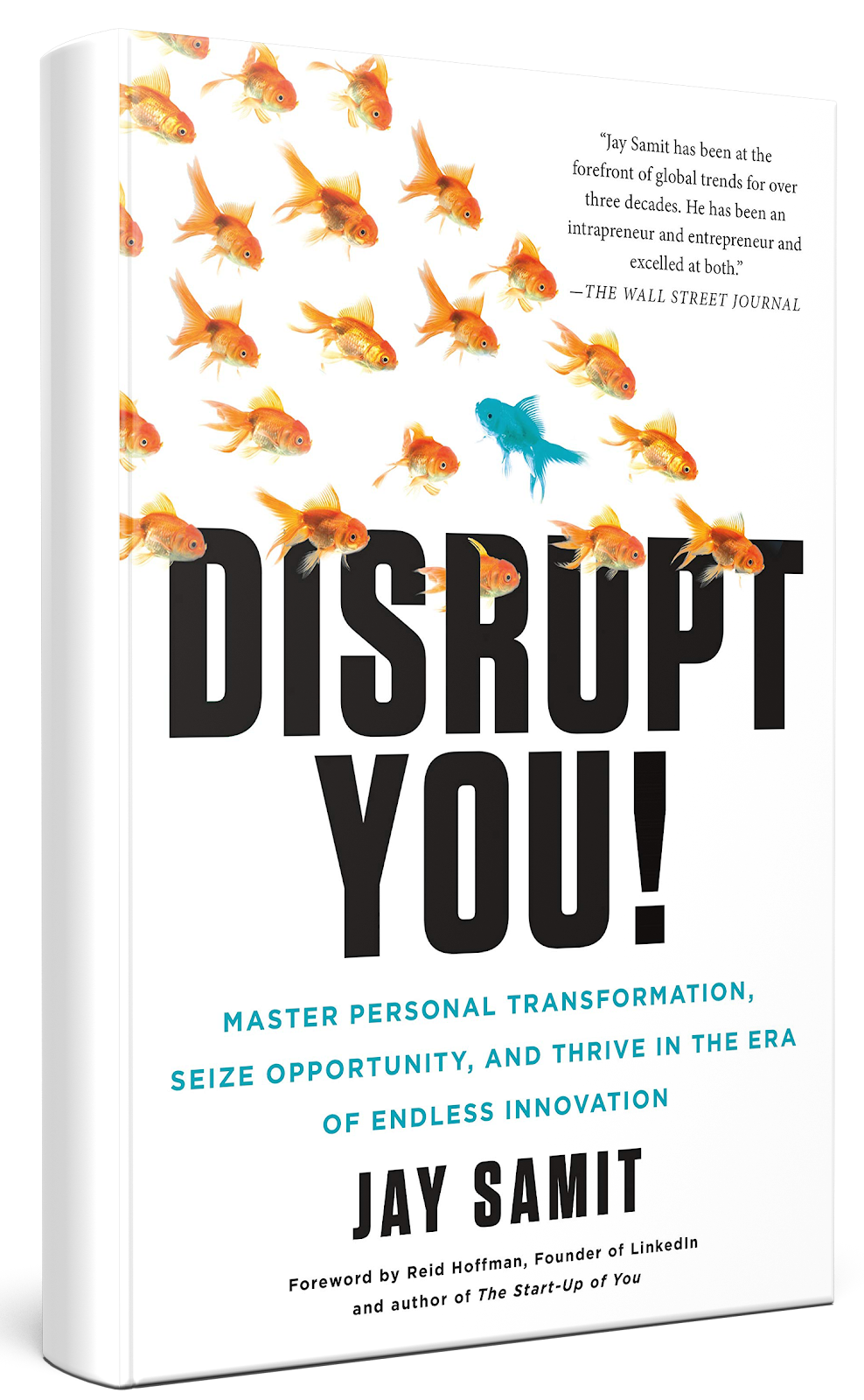
A summary of the book Disrupt You!
Among the refreshing insights of this book are: “successful people see failure as an opportunity; all businesses don’t sell products, they sell solutions; and innovation is merely problem solving, and problems are merely opportunities waiting to be seized.”
Praise for the book:
“Before disruption was something we sat and admired. Now, thanks to this book, it’s something we can stand up and do. With an array of examples so energizing they seem to leap off the page, technology innovator Jay Samit offers sage advice for launching products, building businesses, and transforming careers.
– ADAM GRANT, Wharton professor and New York Times bestselling author of Give and Take
IN TODAY’S VOLATILE BUSINESS LANDSCAPE, adaptability and creativity are more crucial than ever. It is no longer possible – or even desirable – to learn one set of job skills and to work your way up the ladder. At the same time, entrepreneurs with great ideas often struggle finding the necessary funding to launch a start-up can feel impossible. The business leaders of our future must anticipate change to create their own opportunities for personal satisfaction and professional success.
In Disrupt You! Jay Samit, a digital media expert who has launched, grown, and sold start-ups and Fortune 500 companies alike, describes the unique method he has used to invent new markets and expand established businesses. Incorporating stories from his own experience and anecdotes from other innovator and disruptive businesses – including Richard Branson, Steve Jobs, Elon Musk, and YouTube – Samit shows how specific strategies that help companies flourish can be applied at the individual level.
Disrupt You! offers empowering advice for anyone looking to break through, for anyone with a big idea but no idea how to apply it, and for anyone worried about being made irrelevant in an era of technological transformation. This engaging, perspective-shifting book demystifies the mechanics of disruption for individuals and businesses alike.
About the author:
JAY SAMIT has been described by Wired magazine as “having the coolest job in the industry.” He is a leading technology innovator who has raised hundreds of millions of dollars for start-ups; sold companies to Fortune 500 firms; taken companies public; and partnered with some of the world’s biggest brands, including Coca-Cola, McDonald’s, General Motors, United Airlines, Microsoft, Apple and Facebook. Samit is CEO of SeaChange International, a leading global multiscreen-video-software company. He was appointed to the White House initiative for education and technology by President Bill Clinton. He is an adjunct professor of entrepreneurship at the University of California Viterbi School of Engineering.

INTRODUCTION
(Bobby’s Note: This summary follows the author’s first person narrative.)
The year was 1984, and California was in dire straits. The country was emerging from a recession, and California’s unemployment rate was at an all-time high. With much fanfare, it was decided that the troubled state would run a lottery, the revenues of which would generate the sorely needed funds for the state’s schools. A multi-million dollar contract would be awarded to the company that developed the best technology system for selling the new lottery’s tickets. My prototype kiosk with built-in motion detectors was going to be my ticket to fame and fortune.
At the time, I was a twenty-four-year-old with a small multimedia company that did special effects and production work for hire. When the lottery was announced, I had a big idea: why not apply my expertise in the arcade videogame business to help the lottery become more interactive and fun. I partnered with Syntech, a lottery machine manufacturer that supplied ticketing hardware to create a player-activated terminal dubbed the PAT 2500. The PAT 2500 would actually talk to potential customers and encourage them to buy tickets. I outfitted the seventy-nine-inch-tall computer kiosks with laserdisc players, motion detectors and speakers. The kiosk would beckon to anyone who came near it. In 1985, this rudimentary contraption was one of the very first commercial machines capable of handling video and audio. I was convinced that my machine and I were going to revolutionize the way lottery tickets would be bought and sold all over the world. At twenty-four years old, I was sure I figured out how to become a billionaire.
I was competing for the lucrative California Lottery contract against GTECH, who manufactured a primitive adding-machine-size unit that displayed greenish numbers of a black CRT (cathode-ray tube). There was no comparison. I was sure my time had come. I was the young Turk disrupting the lottery industry! I was to the lottery what Henry Ford’ Model T was to horse-buggy makers!
I was wrong!
We were not awarded the contract. GCTECH won and I was stuck. I was nothing more than a guy with big ideas; I was intent on changing the world, making a lot of money, and having fun along the way, but after I lost the lottery contract I was broke and dejected.
With no lottery prospects, I spent the night before I was to fly home to Los Angeles from Sacramento tossing and turning. That night, thinking about who I was and how desperate I was to make my mark in the business world, I began what I would later call “self disrupting.”
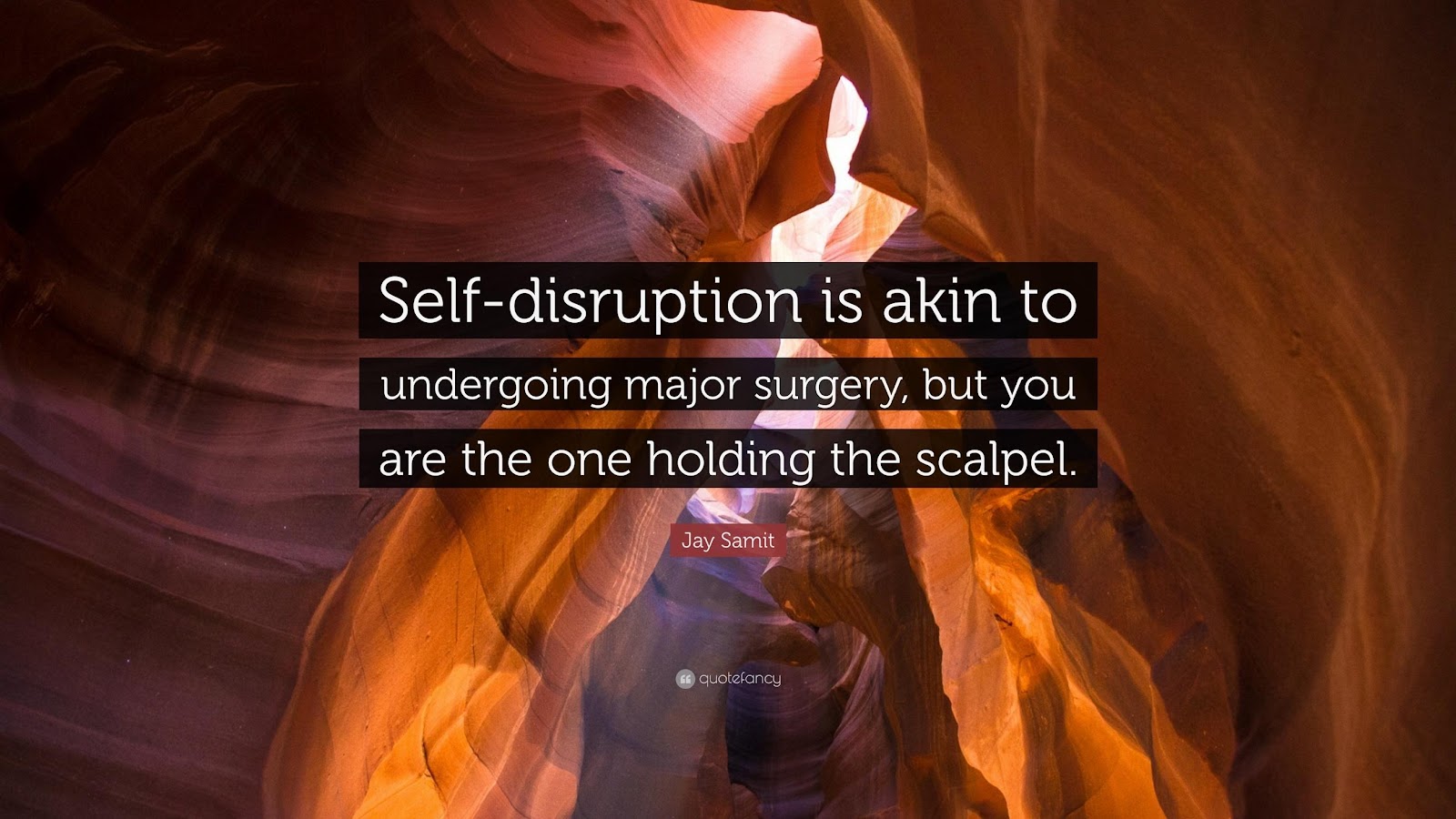
I analyzed all the pieces that came together to form my identity. I began to define what unique experiences and knowledge I had that would set me apart from my peers. I thought about the way I made decisions, how I processed and responded to information, how I approached problems. I thought about the way I presented myself to the world and how I communicated to potential business partners and clients.
And I thought about how I was spending my time and energy. If I was going to find opportunities to make a name for myself in the world, I was going to have to change something in my approach. Then I started thinking about my business in those same terms: Where was the value in my lottery machine? How could I put it to use in a different way?
By the time I landed in Los Angeles, a subtle shift had taken place. When I arrived at LA, looking for the cheapest way to get home from the airport, I stopped by the information booth to ask about shuttle times and services. Just my luck: no one was manning the booth, and there was no place in the terminal to find shuttle or bus information. I realized, perhaps as a result of my previous hours of self-questioning, that this problem presented an opportunity. I started to think through my situation from every possible angle:
- How many of Los Angeles International Airport’s fifty million annual visitors shared this problem?
- How many hours a day were the booths manned, and at what cost?
- How many languages do visitors speak?
Instinctively, I was deconstructing the size and scope of the opportunity while reassembling the strengths only I could bring to solving it.
Twenty-four hours earlier, I had thought my big idea was interactive lottery kiosks, and now I had been wrong. With one pivot I realized what my next business venture would be: automated airport information booths.
I adapted the PAT 2500 into an airport information system that provided taxi, bus, and shuttle data in eight languages and even added an autodial phone to connect the traveler with the dispatcher. By touching the screen, visitors would be welcomed to Los Angeles by a friendly woman who spoke their language and could provide them with accurate information on how to cost-effectively get to more than five hundred local destinations. Within a couple of years my fledgling work-for-hire company had become Los Angeles airport’s sole information service provider, putting in place the systems billions of travelers still rely today.
The kiosk that disrupted the human ticketing agent was once a failed lottery machine.
I was twenty-four years old, and from the ashes of failure I had risen to launch myself on a path of serial entrepreneurship – a path I’ve now been for more than thirty years, and one that’s never let me down.
SELL SOLUTIONS
That early success was not an accident. It was the logical outcome of the introspective process I first implemented that night after finding out I had lost the lottery kiosk contract. I had always been creative, and I knew I wanted to make a splash in the business and entertainment worlds. I had lots of ideas but I could never pull the pieces together to make my dreams happen. Like most people, I don’t know how to channel my ideas and energies into positive actions.
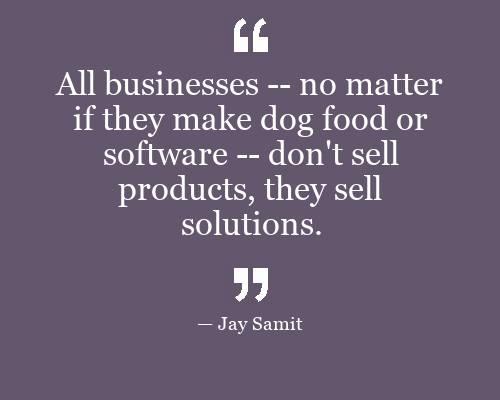
Frustrated by my lack of progress, I reexamined my assumptions about myself and my personal skills. I came to refer to the intense and introspective process of questioning my beliefs and goals – which has, time and again, led to my biggest breakthroughs – as self disruption.
Through self-disruption I have come to see that I can accomplish what I once thought impossible. I’ve discovered that if I am able to express any problem as a series of challenges, I can build a team capable of rising to those challenges.
I have realized that businesses -whether they make dog food or software – don’t sell products; they sell solutions.
Over the course of my career, my method of self-disruption has led me to work quickly and easily across entirely divergent industries – automotive, telecommunications, packaged goods, and quick service restaurants – changing the very nature of those businesses. I went from running a twenty-person start-up to being a global officer of an international company with over 160,000 employees. I’ve collaborated with Fortune 500 companies, foreign governments, and even the Vatican.
In one year alone, I took stakes in more than twenty companies around
the world (without investing a dime) and generated over $100 million profit. And best of all, I’ve never worried about job security or where my next idea will come from because I can always return to the techniques of self-disruption that have helped me transform myself and my businesses time and time again.
ALL DISRUPTION STARTS WITH INTROSPECTION

Over the past three decades, I’ve come to see that I’m not alone in the way I question my beliefs and find opportunity. History’s successful innovators have always employed aspects of this approach.
Gutenberg’s ushering in of the Renaissance and the eventual democratization of knowledge wasn’t born from the invention of the movable type, but rather from the way he deconstructed the value chain of German presses, enabling him to invent the printing press.
Magician Harry Houdini went from doing multiple performances a day in a dime show to being the most famous entertainer on the planet – not because he was the best magician, but because he disrupted the way entertainment was mass-marketed.
Nearly a century later, Canadian street performer Guy Laliberté would similarly deconstruct the value chain of the circus, disrupt the industry with Cirque du Soleil, dominate Las Vegas showrooms, and become a multi-billionaire.
Every successful disruptor employs one or more of these techniques to transform themselves, their businesses, and the world. They look internally, questioning their assumptions about themselves and reevaluating their unique talents. They put themselves on the path to success, even if they didn’t know what might lie ahead. And they understand that they cannot fall in love with their ideas, they must be willing to destroy their concepts and pivot their energies before the market can render their businesses obsolete.
All disruption starts with introspection. The way we understand our internal value chains – how we view ourselves and how we interpret our personal strengths – is a the core of all external success. I have applied these insights to raising over $800 million for start-up companies as well as launching new businesses in billion-dollar industries as diverse as telecommunications, music, and ecommerce.
I didn’t go to the right schools or know the right people, but I did learn how to disrupt my own belief systems in order to reposition myself to take advantage of opportunity and achieve success. And I’ve done it again and again – achieving resilience in an often unstable business landscape.
Sir Richard Branson founded Virgin as a record store, only to discover that the real value was in creating, not selling, records. The most successful serial disruptor in history, he has created billion-dollar companies in eight different industries.
Lowell “Bud” Paxson deconstructed the value chain of his failing Florida radio station. When no one would advertise on his station, he bought surplus goods and sold them on air instead of running commercials. This idea was so successful that he transformed his local station into the billion-dollar retailing empire now known as the Home Shopping Network.
Joyce Clyde Hall was going broke selling penny postcards, until he killed his big idea that people wanted to write home to loved ones. His realization that most people can’t write led him to fill out the postcard for them. With the stroke of a pen he created Hallmark and launched the entire greeting card industry.
You have a choice: pursue your dreams or be hired by someone else to help them fulfill their dreams. The great disruptors constantly reinvent themselves and their careers. They never fear losing their jobs, because they create jobs. They control their own destinies.
This book is written to answer two very basic questions: How did they do it? How can I do it?
The third question is entirely up to you: Will you do it?
BECOME A DISRUPTOR
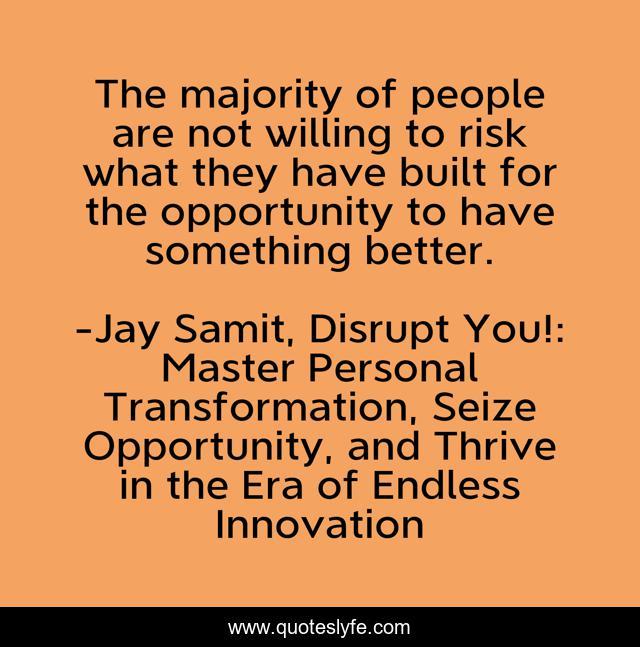
Disrupt You! examines how anyone can adopt a disruptor’s mindset and set themselves on a disruptor’s path to success – whether that means starting your own business, proving your value at the company where you’re already employed, or rebranding yourself for career transformation. We will look at how successful disruptors identify opportunities created by disruptions in the value chains of other businesses, and know when to pivot their energies and adjust their business models.
Disrupt You! isn’t just for startup entrepreneurs or corporate employees; it is for everyone looking for promotion, a raise, or a way to get more satisfaction out of their lives.
Being a disruptor is simply a state of mind. It is the ability to look for opportunity in every obstacle, to respond to every setback as a new beginning. It is the silver-lining of business.
Every successful person who has skillfully transformed a business or social organization started with a personal problem and then noticed how many other people shared the same problem. What sets disruptors apart from other people who merely experience problems is that disruptors see themselves and their worlds differently. That unique viewpoint enables them to become agents of change – and to reap the rewards. Disruption isn’t about what happens to you; it’s about how you respond to what happens to you.
Every road warrior has experienced the misery of missing a connecting flight and feeling helplessly stranded at some faraway airport. But when this happened to Sir Richard Branson, he responded differently. In 1979, when the twenty-nine-year-old music executive missed his flight to Puerto Rico from the British Virgin Islands, he looked around the airport and add up in his head how many other travelers were also stranded. He quickly chartered a plane and wrote on a blackboard VIRGIN AIRWAYS $39. Everyone got to where they wanted to go. But Sir Richard and his fiancée, Joan, got to fly for free. For Sir Richard, starting what would become a billion-dollar airline was really as easy as missing a flight. Disruptors recognize that the problems they’re facing are probably happening to others as well.
While still in college, Jane Hyman watched as her frustrated sister Becky experienced a dilemma familiar to nearly all women: having “a closet full of clothes but nothing to wear.” Becky’s desire to look fabulous for a friend’s wedding couldn’t be fulfilled on her modest salary. She wanted to wear a high-end designer dress from Hervé Léger or Proenza Schouler, even if just for one night. That’s when Jenn came up with a simple disruptive idea: what if there was a dream closet where women could rent the latest designer fashions, affording them a new dress for every occasion?
Jenn partnered with her Harvard Business School classmate Jenny Fleiss, and Rent the Runway was born. “Our intention is to disrupt every single part of what retail has meant historically,” Jenn remarked recently in a Forbes interview. And disrupt they have. With nearly $55 million in venture capital funding, Rent the Runway now employs more than two hundred people, ships dresses and accessories to women around the world, and is challenging the way New York’s top designers and department stores do business.
Most American college students owe over $1 trillion in student loans. An entire generation is carrying the burden of a mortgage without the advantages of owning a home. Attorney Gene Wade looked at this massive problem and created a simple but disruptive solution: an affordable online degree. Unlike other digital schools, Wade’s UniversityNow provides students with an all-you-can-eat model for a little as $2,600 a year. The bargain pricing includes all books and tuition for fully accredited degrees ranging from undergraduate degrees to M.B.A.’s. “I became an education entrepreneur because the current system does not have the capacity to serve people with unique higher-education needs,” Wade says. With over $42 million in venture funding, UniversityNow is well positioned to disrupt the business of higher education and free future generations from unmanageable debt. Wade is a man on a mission, with big, bold dreams.
What Sir Richard Branson, Jenn Hyman, and Jenny Fleiss, and Gene Wade have in common is the mindset of the disruptor. Rather than observing a problem and sitting back and waiting for others to solve it, they jumped in headfirst, seeing massive problems as massive opportunities. To adopt the mindset of a disruptor, you must first disrupt yourself.
THE ART OF SELF-DISRUPTION

We saw how disruption occurs when a link in the value chain is entirely transformed by the introduction of a new technology or product – one that creates a new market demand and forces an overhaul of the previous business model.
I suggested that a disruptor is not necessarily the inventor of a revolutionary new product, but can be anyone who seizes the opportunities created at other points in the value chain of a business when one link has been disrupted.
Let us now explore how you can analyze and disrupt the links in your personal value chain to unlock your potential and prime yourself to seize opportunity.
“The mind is everything. What you think, you become,” Buddha wrote a millennia ago. Your self is nothing more than what you believe it to be. You must remove all the internal and external definitions of self that limit your progress in life.
Just as a company has a value chain that defines a business’s success, we can think of our own identities as being formed by our internal value chains. Our internal value chain make us who we are; they guide the way we function in the world.
Our research and development center takes input from our environment and perceives it as either an obstacle or an opportunity.
The brain, our design-and-production center, dictates actions in response to our perceptions.
We market and sell ourselves in the ways we present ourselves to the world, which are based on what we see as our personal strengths and limitations. We distribute ourselves in the ways we choose to spend our time and where we focus our energies. When viewed from this framework, the process of self-transformation becomes approachable: you need only analyze each link in your internal value chain and find the single link that is holding you back. Then make changes to the link to disrupt yourself.
Think of yourself in terms of your personal value chain. The research and development links are all the various ways you interpret the world around you.
- Where do you thrive best – in an office environment or in a more independent and creative setting?
- Why type of people do you work best with?
- What do you believe about yourself that might not be true?
Seeing environmental influences as nothing more than links in the chain that make who you are, you are empowered to make the changes necessary to become who you want to be.
The next links in the chain are the production and design.
- What emotions and actions are produced when you’re confronted by a challenge or problem?
- Do you feel frustrated or defeated, or can you change the way you think so that you can tackle problems with an open mind, thinking holistically?
- Do you worry that you’ll have to prove yourself all over again to keep your job or do you view it as an opportunity to get the promotion you think you deserve?
So much of self-disruption is making deliberate choices in your life instead of running on autopilot. The fight-or-flight response from your automatic [sic] nervous system pumps you full of adrenaline, causing your heart and respiratory rate to increase. Consciously take yourself off autopilot.
By following this approach to all your challenges, you will quickly see that success comes not from circumstances beyond your control, but from the way you respond to those circumstances.
Disrupting the next link in your personal value chain involves analyzing how you market and sell your potential. Not your skills or accomplishments, but your limitless potential. Most people, when applying for a job or raising money for their startup, focus their energies on explaining what they have achieved in the past. Success is all about championing and defining the future.
Finally, think about how you distribute your time and energy.
- Could you devote more time educating yourself so that you can pursue the job of your dreams?
- Could you find a way to use your time more efficiently?
- Or could you even just make the changes necessary to devote more of your energy to tasks you enjoy?
- What would happen if you changed the way you spent your day so completely – would it enable you to really follow your dreams?
Disrupting your internal value chain is the same as breaking down a car engine in order to rebuild it into a race car. You can’t win a race without a winning mindset. You have everything you need to thrive ; you just have to plan for the race of your life.
THE DISRUPTOR’S MAP
We have determined that success in the era of disruption comes from finding and exploiting opportunities created by the entrant of a new technology or product. But today’s most successful disruptors didn’t just sit waiting for opportunity to knock.
All of the innovators I know created opportunity for themselves by seeing their lives and their paths as journeys. I’m not saying they had everything planned out, but almost everyone I interviewed for this book had a starting point and an end goal in mind. They didn’t wait to understand what all the steps along the way would look like, but they did try to draw some sort of map for themselves before they embarked.
ACKNOWLEDGE THAT TIME WAITS FOR NO ONE
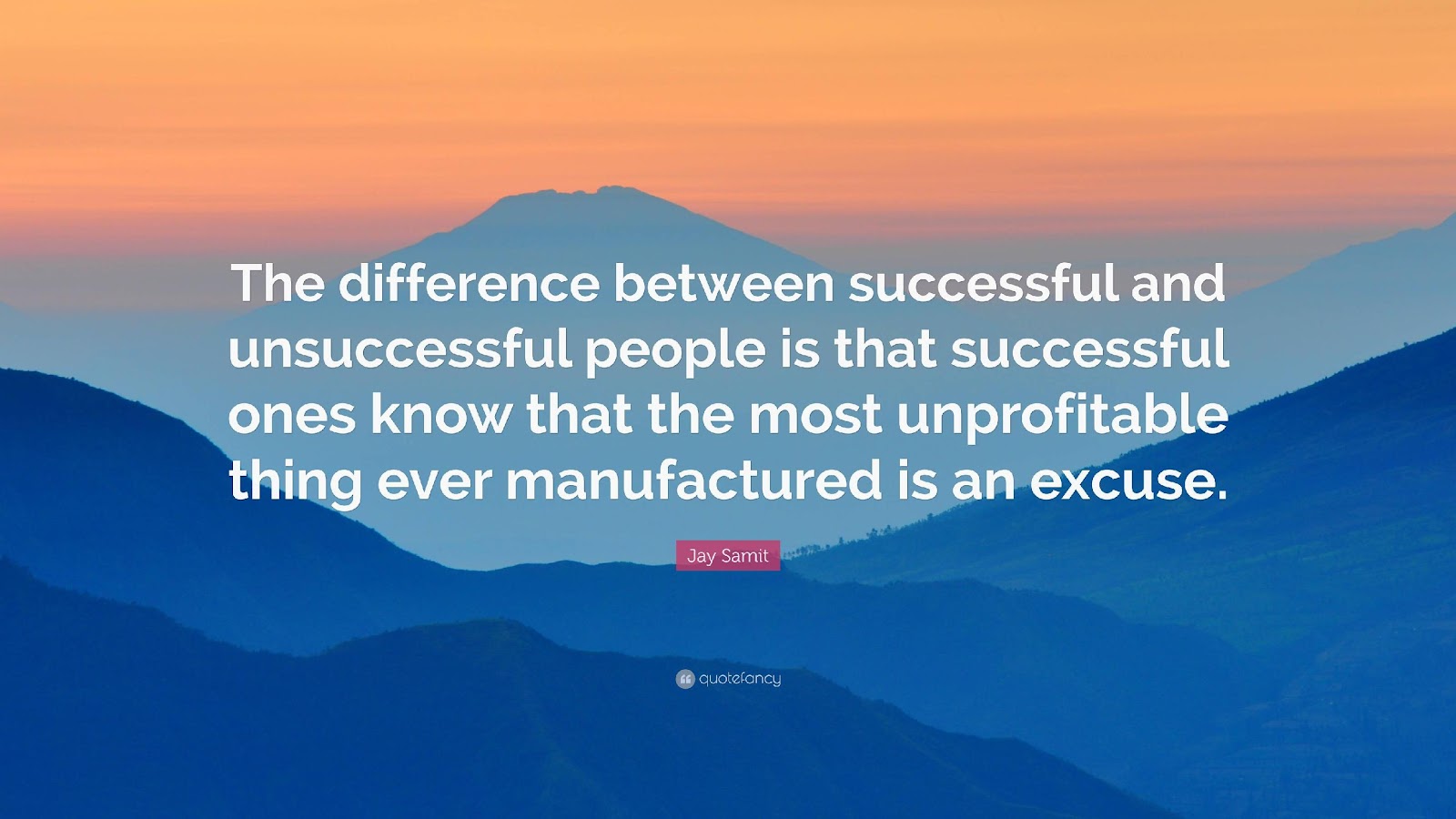
You are not going to live forever. Hospice workers say that the number one regret they hear from dying patients is that they wish they had been courageous enough to live true to themselves and had not been guided by the expectations of others. Life is short – so what is stopping you?
To really achieve everything you set out to accomplish, you must set deadlines. Work backward from each deadline and develop incremental steps. What are the pieces that make up the whole goal? Bill Murray’s character in the movie What About Bob? says it brilliantly when he repeats to himself the need to take “baby steps.”
Achieving your goal is also about delaying instant gratification that comes so easily in our always-on lifestyle. Delaying marriage, children, or vacations to build a career or a company is about living a few years of your life in a way most people won’t so that you can spend the rest of your life living at a level most people can’t.
The easiest way to set priorities is by working backward from a future goal. I am often asked by young entrepreneurs if now is a good time to start a business. My answer is always the same: “A year ago was the best time to start your business. The second-best is now.”
Proving that you are never too old to disrupt is my business partner Doug Netter. At ninety-two, Netter (along with Steven Latham and I) sold the first multiscreen interactive show to a major television network, in 2012. Doug has been working in Hollywood longer than most executives have been on this planet, but ever since I worked with him to pioneer new technology on Babylon 5 in the 1990s, he has always strived to innovate television. With this game show we wanted to finally change the way people interacted with national television. Though the show never made it past the pilot stage, Doug remains a constant inspiration, demonstrating that you really can change any industry if you just keep moving forward and that never is the right time to quit.
Every successful disruptor I know refused to sit back and wait. They didn’t worry about the time being right or the conditions being perfect; they just dived in.
Failing to plan is planning to fail,” bestselling time management author Alan Lakein cleverly wrote. The author of How to Get Control of Your Life adds, “Planning is bringing the future into the present so that you can do something about it now.” If you’ve been responding to these prompts, you know your disruptor’s map.
Committing your aspirations, priorities, resources, and deadlines to paper gives you a personal business plan to measure your progress against. The difference between successful and unsuccessful people is that successful ones know that the most unprofitable thing ever manufactured is an excuse.
CREATING A ZOMBIE IDEA
After honing all of their observations down to one big idea, most people are afraid to act on it. One of the most common misconceptions of having a big, disruptive idea is that if the words gets out, someone with better connections and more money will steal your creation.
After David Fincher’s movie The Social Network came out in 2010, a paranoia set in with young entrepreneurs that they were going to get “Zucked.” As in: if you tell anyone about your idea, the next Mark Zuckerberg is going to come steal your idea and become the billionaire whom you were destined to be. The result of this hysteria was that budding disruptors were afraid to tell anyone their brilliant ideas.
Wanting to build creations in stealth mode, with no collaborators or funding whatsoever, is an unrealistic impossibility. Many first-time entrepreneurs approach me with nondisclosure agreements (NDA) for fear that even one unprotected whisper of their concept could result in their fortune riding off like an unchained bike on a college campus. Nothing could be further from the truth.
“Nobody is going to steal your stupid idea,” Founder Institute head and serial entrepreneur Adeo Ressi loves to tell first-time entrepreneurs. The Founder Institute is the largest startup accelerator in the world. It has helped launched 750 companies in five continents and more than 40 percent of these incubated companies get funded. Still, Ressi is so confident that ideas won’t be stolen that he offers a $1,000 reward to anyone in the Founder Institute who can get their idea stolen.
When Steve Jobs went to technology leaders with his prototype for a personal computer, he was met with derision. Jobs recalled the experience in an interview with Classic Gamer magazine: “So we went to Atari and said, ‘Hey, we’ve got this amazing thing, even built with some of your parts, and what do you think about funding us? Or we’ll give it to you. We just want to do it. Pay our salary, we’ll come work for you.’ And they said, ‘No.’ So then we went to Hewlett-Packard and they said, ‘Hey, we don’t need you. You haven’t gone through college yet.’”
Instead of trying to promote your idea, as Jobs had done, Ressi’s advice to young entrepreneurs is startlingly counterintuitive. According to Ressi, your goal is not to promote or protect your idea, but rather, “Your job is to kill your dumb idea.”
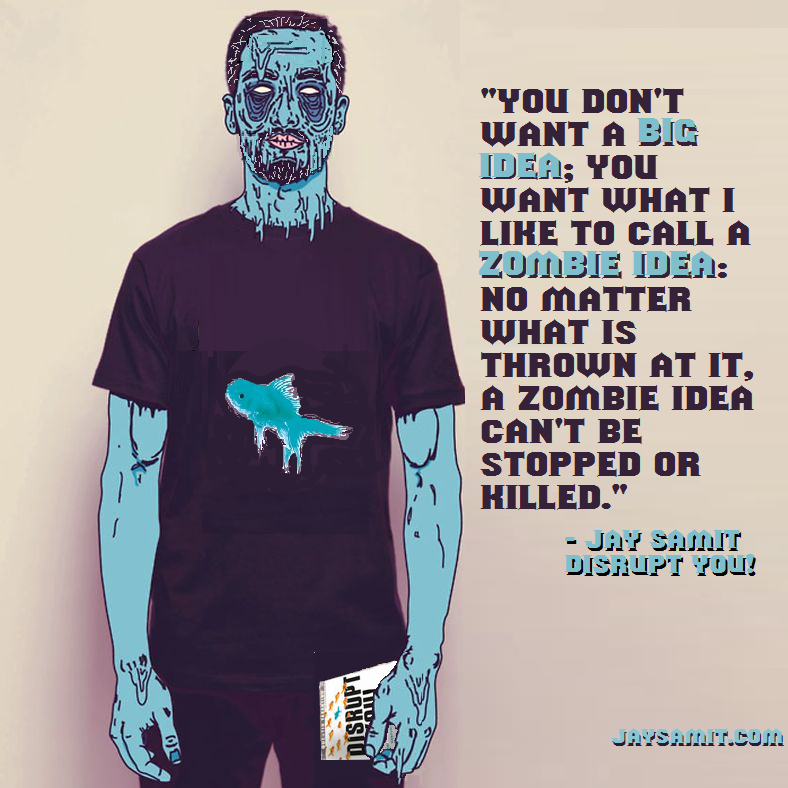
Ressi is absolutely right. A disruptive idea should not be nourished like a seedling with the expectation that it would grow to a mighty oak. The trouble with most entrepreneurs is that they would rather be ruined by praise than saved by criticism. Your job is to try everything you can to kill your big idea and discover every way that it can fail. When you discover a crack in your plan, fix it, reshape it, and make it stronger.
The Japanese have an art form called kintsugi. They fix broken pottery with gold lacquer resin, believing the repaired ceramics are more gorgeous and precious than they were before they were destroyed. The same applies to killing and reviving your big idea. Through that process you build a strong, beautiful business that the competition and market forces can’t destroy. You don’t want a big idea; you want what I like to call a zombie idea: no matter what is thrown at it, a zombie idea can’t be stopped or killed.
Disruptors looking for a big idea need only examine their world and their businesses. What problems do you confront every day? How do those problems provide the opportunity for value to be captured? More often than not, a big idea is just a simple solution to a small problem.
PIVOTING YOUR ENERGIES
When I was a global president of digital distribution at EMI, I did business with a guy who had the typical startup horror story. He had founded a high-tech company in Silicon Valley and created substantial value for his venture capital backers. But then competition grew and his market share fell below 5 percent. The same board that had applauded him when things were good kicked him to the curb the moment things headed south. They brought in a corporate CEO who didn’t fit the company culture, and things continued to decline. After a series of failed attempts to right the ship, and faced with no other choices, the board reinstated the original founder. With no new product in development and the business in dire shape, he pivoted the company from making personal computers to revolutionizing consumer electronics and telecommunications. This company was called Apple, and its cofounder, Steve Jobs, disrupted the world.
GE Chairman Jack Welch was fond of saying, “Change before you have to,” but for the first-time entrepreneur, knowing when to plow through it and when to change directions is the hardest decision to make. Emotionally, it can mean abandoning your baby in the forest or, worse, selling it to a butcher to be cut into pieces.
In a constantly changing world, learning when to pivot is a skill that is useful for any business. For every cliché about how “winners never quit and quitters never win,” there is another that says, “If you always do what you’ve always done, you’ll always get what you’ve always got.”
Pivoting a business did not come to me naturally when I built my first company. Jasmine Multimedia was like my first child. What I lacked in experience I compensated for in drive. Now I can acknowledge that chief among the lessons I’ve learned from the process of building and growing that company is the lesson that pivoting is less an admission of failure and more a way to find new opportunities to be successful. The lesson applies to every business and every career.
With only the desire to survive guiding me, my first company pivoted from business -to- business custom productions to publishing, from CD-ROM to the Internet. Each iteration of the business had to resolve new challenges to its assumptions about the value it was creating and the constant threats to its position in the market. This is never an easy task.
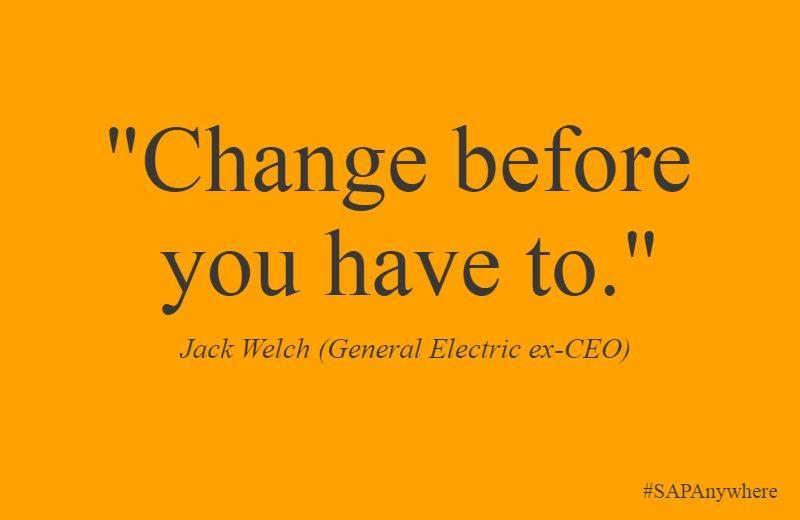
The music industry pivoted too slowly from manufactured goods to digital distribution and didn’t survive intact. As an executive vice president at Sony, I watched as the company couldn’t pivot from being a stand-alone consumer electronics manufacturer to a creator of networked digital ecosystems. The failure to change course caused Sony to shrink rapidly from a market capitalization of $100 billion in 2000 to $15 billion in 2012.
True disruptors are not afraid. When the creation of the World Wide Web disrupted the entire software industry in 1995, Microsoft chairman Bill Gates bravely pivoted the entire company through his famous Internet Tidal Wave memo.
Gates wrote prophetically: “The Internet is the most important single development to come along since the IBM PC was introduced in 1981. The PC analogy is apt for many reasons … a phenomena grew around the IBM PC that made it a key element of everything that would happen for the next 15 years. Companies that tried to fight the PC standard often had good reasons for doing so but they failed because the phenomena overcame any weaknesses that resisters identified.”
With that thirty-eight paragraph memorandum as a guide, Gates restructured all of Microsoft and pivoted the market leader in packaged software into a leader in a new digital economy. Microsoft may not be the dominant company that it was at the birth of the personal computer revolution, but Gates’s timely pivot successfully positioned the company for many years.
For most businesses, pivoting is less about big changes in direction and more about adjusting to ever-changing market conditions. Businesses are like sailboats cutting through choppy waters. In order to move forward through calm winds or storms, the captain must tack the ship back and forth in a constant series of minor adjustments. Test, verify, and adjust is the only way to stay on course.
When speaking to the most successful Silicon Valley venture capitalists, they can all, to a person, share stories of companies that they had invested millions of dollars in that were so far off course that the board debated pulling the funding and closing the operation down. The punch line to the story is invariably that the company pivoted, and the result was not only the biggest success of the investors, but also the biggest success in the history of the venture firm.
THE SELF-DISRUPTOR’S MANIFESTO
One of my favorite stories is the CEO of a very large and successful tech company who realized that it had been years since he toured the halls of the giant corporation he had built. Walking the floors of its Silicon Valley campus unannounced, he stumbled upon a young man staring out the window. Ten minutes went by and the young man continued to stare out the window, not realizing that the CEO was watching him. Another ten minutes, then an hour, and the young man still just lazily stared out the window. The CEO, who had built the company working eighty-hour weeks for fifteen years, was starting to get livid. With his blood pressure rising by the minute, the founder glared at the young man for two hours, until he could not take it any longer. The boss angrily raced up to the boardroom, ready to fire the company’s management. He demanded that all his senior executives explain what kind of company they were running, where an employee could sit idly for hours doing nothing. “Who is that young man? Who does he work for? What does he do?” the enraged CEO shouted.
Nervously, an executive VP with an Ivy League M.B.A. explained that the engineer in question was the one who had thought up the company’s hit product that year and the bestseller from the year before that. This appeared to appease the CEO and saved their jobs. Everyone went back to work as normal. The next morning, the daydreaming young man returned to his office, where he discovered that he had been given a bigger window.
We all start life with big dreams and ambitions. The stories recounted and the process described in this book are designed to rekindle that childlike sense that anything is possible. Your future- our world’s future – is far more malleable and controllable than most people realize. If we take the time to study how our business and social institutions are constructed, it is possible to determine how they can be disrupted.
No one writes books about those who failed to take risks. History doesn’t remember those who maintained the status quo. The glory comes from being a disruptor. Every man and woman would like to leave their mark – some evidence of their existence – on this world. This is the self-disruptor’s manifesto: to transform yourself, your business, and the world.
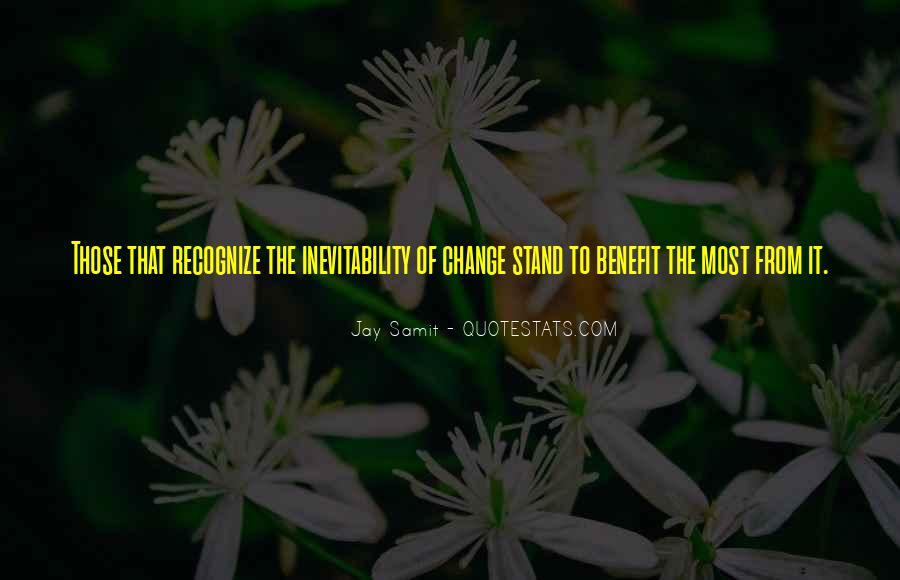
We are all filled with opportunities for improvement. For some, the improvement is to build a business that provides products that make life better for their customers. For others, the improvement comes from working to create a more just and verdant society. Still others are driven to connect people in ways never before possible or imaginable. But anyone setting out to change the world will follow the same path. First, they will have to transform themselves to maximize the opportunities in their lives. According to Forbes magazine, only 13 percent of the world’s billionaires were born into money. The vast majority of today’s most successful individuals changed themselves in such a way as to make becoming a billionaire possible.
“My interest in life comes from setting myself huge, apparently unachievable challenges and trying to rise above them,” Sir Richard Branson said. Branson’s first business was modest: he sold Christmas trees when he was just twelve years old. He had no formal business training and didn’t even go to college. But he is a genius when it comes to just putting his mind to overcoming obstacles. Steve Jobs, Michael Dell, Mary Kay Ash, Simon Cowell, and dozens of other business icons achieved their goals by deciding that nothing would stop them.
All of these disruptors also looked for where their efforts could make the biggest impact and change the status quo. Innovation is merely problem solving, and problems are merely opportunities waiting to be seized. No obstacle is so big that one person with determination can’t make a difference.
The more world leaders I have the privilege of meeting, the more I realize that they are no different from you and me. They are simply men and women determined to make the greatest impact they can in the time they have. No one who has ever led a nation got there by following in the path of another.
Lack of access to capital is no longer an excuse for today’s disruptors. When Larry Page and Sergey Brin founded Google, back in1998, the search engine needed the processing power of a $1 million DWC AlphaServer 8400 and a server farm with racks of hard disk storage. Today, iPad is more powerful than that AlphaServer, and storage in the cloud is a cheap, universally accessible commodity.
The latest technology is waiting for disruptors with big zombie ideas. Low-cost smartphones will bring another one billion into the digital age and greatly enhance interconnectivity among billions around the globe.
The Internet of Things will connect some fifty billion Internet Protocol (IP) devices by the year 2022. Just as barcodes changed how products communicated in retail, IP devices in the home will be able to do everything from monitoring the health of loved ones far away to knowing when the eggs in the refrigerator will spoil.
Online connections are now 180 times faster than they were at the turn of the twenty-first century. The actual cost to start a globally disruptive business is much lower than it was a decade ago.
These developments have given all of us the same knowledge and computing power that was limited to very elite institutions just a generation ago. What will create and what challenges will we be able to overcome? This is my true purpose in writing this book. I want to help foster a new generation of disruptors: visionaries unfettered by the limitations of the past, who will solve the issues other generations thought impossible.
Even our greatest accomplishments are destined to be disrupted. In 1492, Christopher Columbus was granted a lifetime pension from Spain’s Ferdinand and Isabella for making it across the Atlantic. Today, there are over seven hundred transatlantic flights a day, and no one thinks twice about it. People don’t drive Model T Fords or use Microsoft DOS computers. Each of these revolutionary advancements was merely a moment in the never-ending cycle of disruption, and they are made all the more special because of how quickly they empowered the next generation of disruptors.
The joy of disruption comes from accepting that we all live in a temporal state. In this era of endless innovation, each of us has the power to seek out new problems to solve, to look inside and reexamine our strengths, and to develop a disruptor’s mindset. Our purpose is to contribute to the time we live in by reinventing ourselves and our world.
By exposing in this book the process for unlocking and creating value, my hope is to inspire the next wave of innovation and disruption. Disruptors benefit society by bringing positive change to all aspects of life.
Disrupt you! is only the beginning of the process. Disrupt you! is a call to action, a cry for positive change. I hope it had inspired you to transform yourself, your industry, and the world.
University of Experience is a special Aboitiz Eyes section that focuses on leadership insights from the unique experiences, perspectives, and wisdom of leaders who have stood at the helm of Aboitiz over the years.
If you enjoyed this article, would like to suggest a topic, or simply share your feedback, please CLICK HERE.

